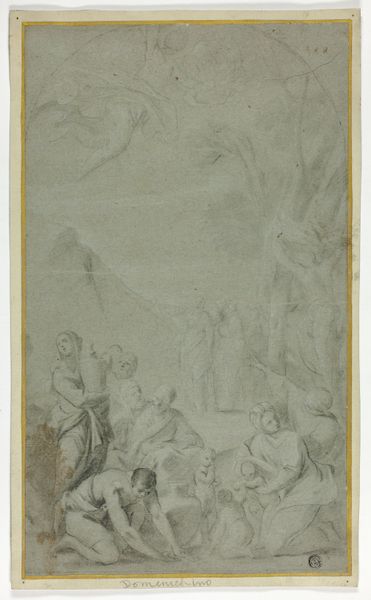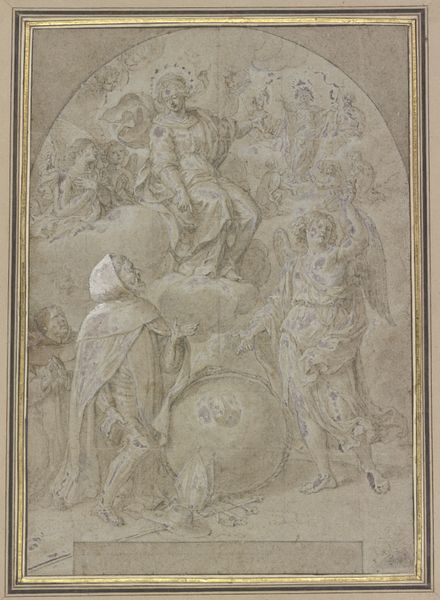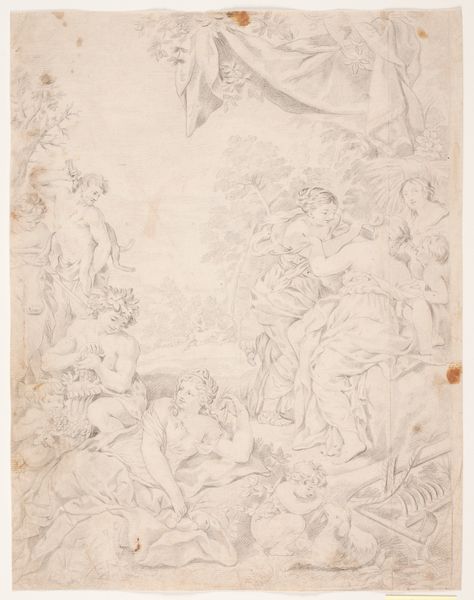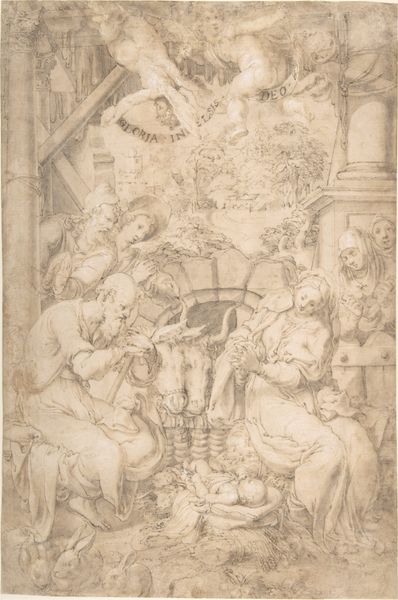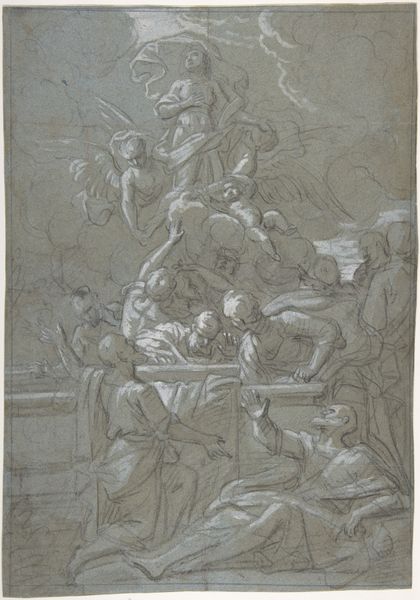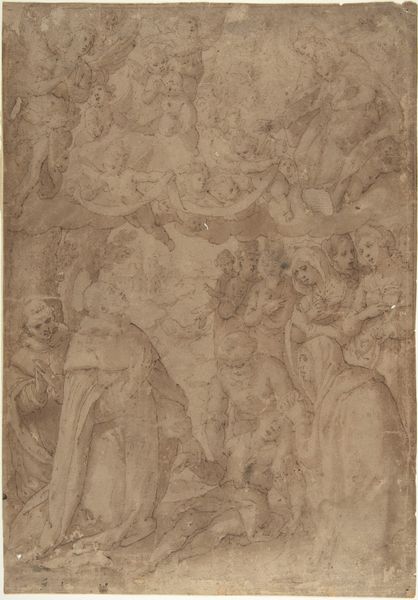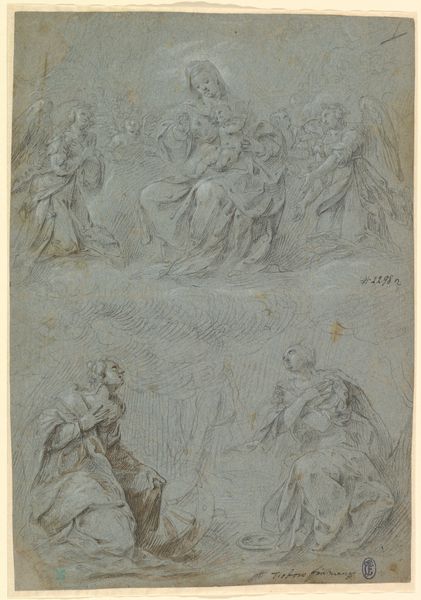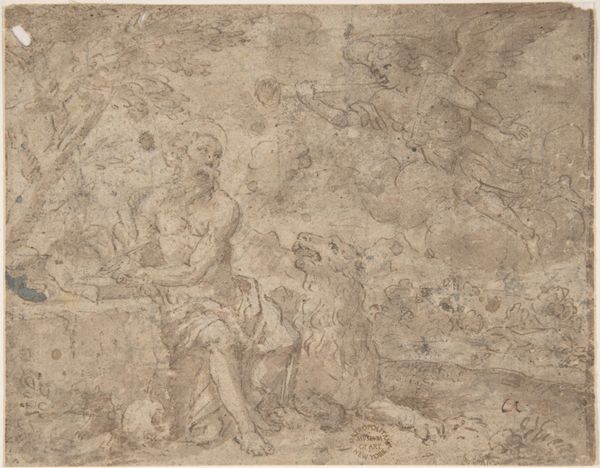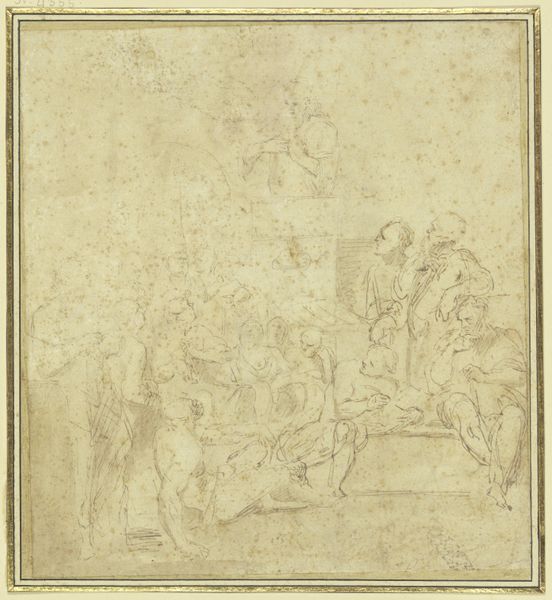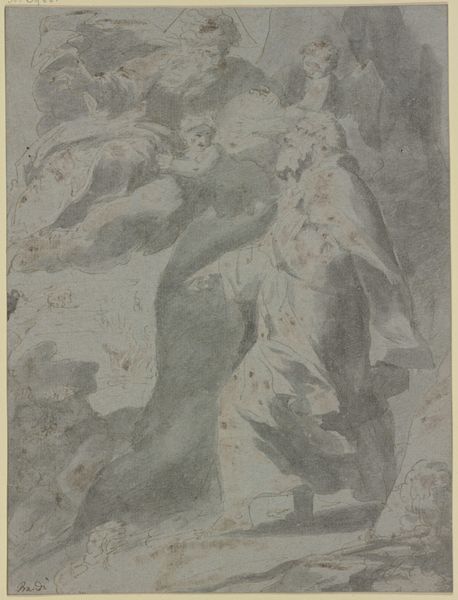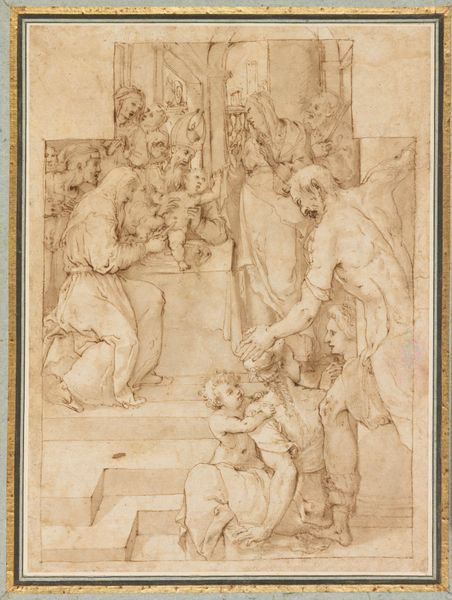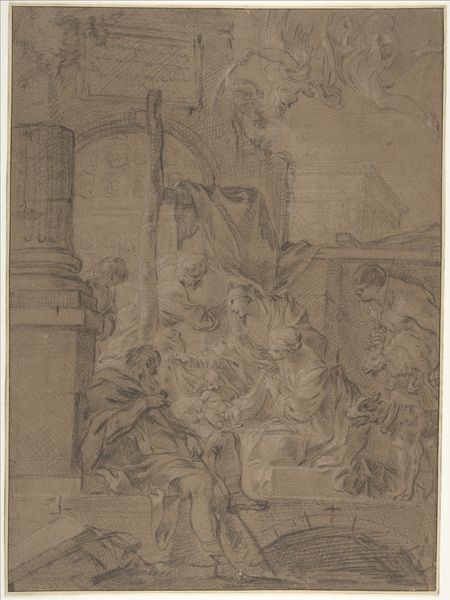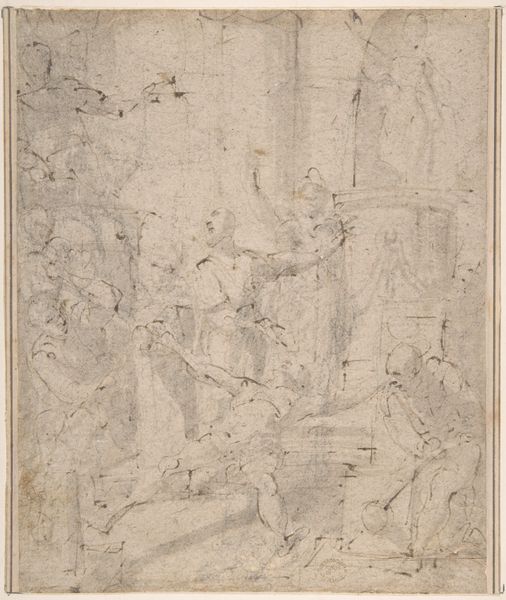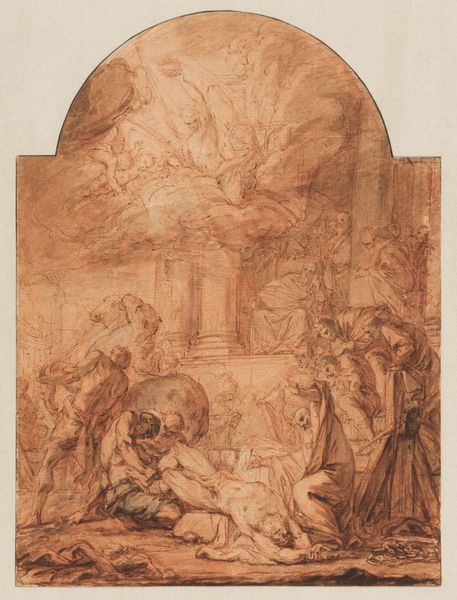
drawing, print, paper, ink
#
drawing
#
natural stone pattern
#
rippled sketch texture
#
abstract painting
# print
#
possibly oil pastel
#
paper
#
ink
#
abstract pattern
#
organic pattern
#
underpainting
#
men
#
water
#
natural texture
#
italy
#
layered pattern
#
organic texture
Dimensions: 443 × 298 mm
Copyright: Public Domain
Curator: Let’s turn our attention to a drawing currently residing at the Art Institute of Chicago, attributed to Paolo Veronese, called "Mystic Marriage of Saint Catherine," dating back to somewhere between 1650 and 1700. Editor: What strikes me first is how ethereal it appears. The figures seem to emerge from a hazy ground, giving it a dreamlike, almost ghostly quality. Curator: It’s remarkable, isn’t it? Considering the context – the "Mystic Marriage" is loaded with iconography related to Saint Catherine’s devotion and her symbolic union with Christ. It often represents spiritual fulfillment, and the surrendering of earthly concerns to a divine love. Here, Veronese seems to grasp for the transcendent, a connection beyond the material. I see strong ties with the philosophical debates around the soul's journey to God popular in that period. Editor: Absolutely. I notice the deliberate placement of the key figures: Catherine, typically associated with wisdom and philosophy, and Christ as the divine bridegroom. There is also water at the bottom left. Their union, visualized through the exchange of a ring, symbolizes not just religious devotion, but a promise that transcends cultural, socio-economic divides and suggests hope and commitment as relevant as ever today. How interesting this could be interpreted with contemporary couples, regardless of sexual orientation! Curator: Precisely! But note too how it challenges the expectations set by patriarchal power structures and notions of female dependence so rife during this historical era. Catherine’s story defies conventional narratives by prioritizing intellectual pursuits, agency, and choosing spiritual union over arranged marriage – a powerful commentary when viewed through today's lens. Editor: And consider the angels swirling above, observing. Perhaps this references spiritual witnesses or maybe the ever-presence of higher forces in moments of dedication. The gray monochrome reinforces the solemnity, a renunciation of vibrant earthly hues for something… deeper. Curator: Indeed, this piece encapsulates Veronese’s distinctive flair for combining religious allegory with insightful socio-political observations relevant across centuries. Editor: Well, examining this drawing definitely enriches one’s understanding of the enduring power of symbolism intertwined within narratives of spirituality, choice, and social expectations. It encourages a conversation well beyond its creation era.
Comments
No comments
Be the first to comment and join the conversation on the ultimate creative platform.
